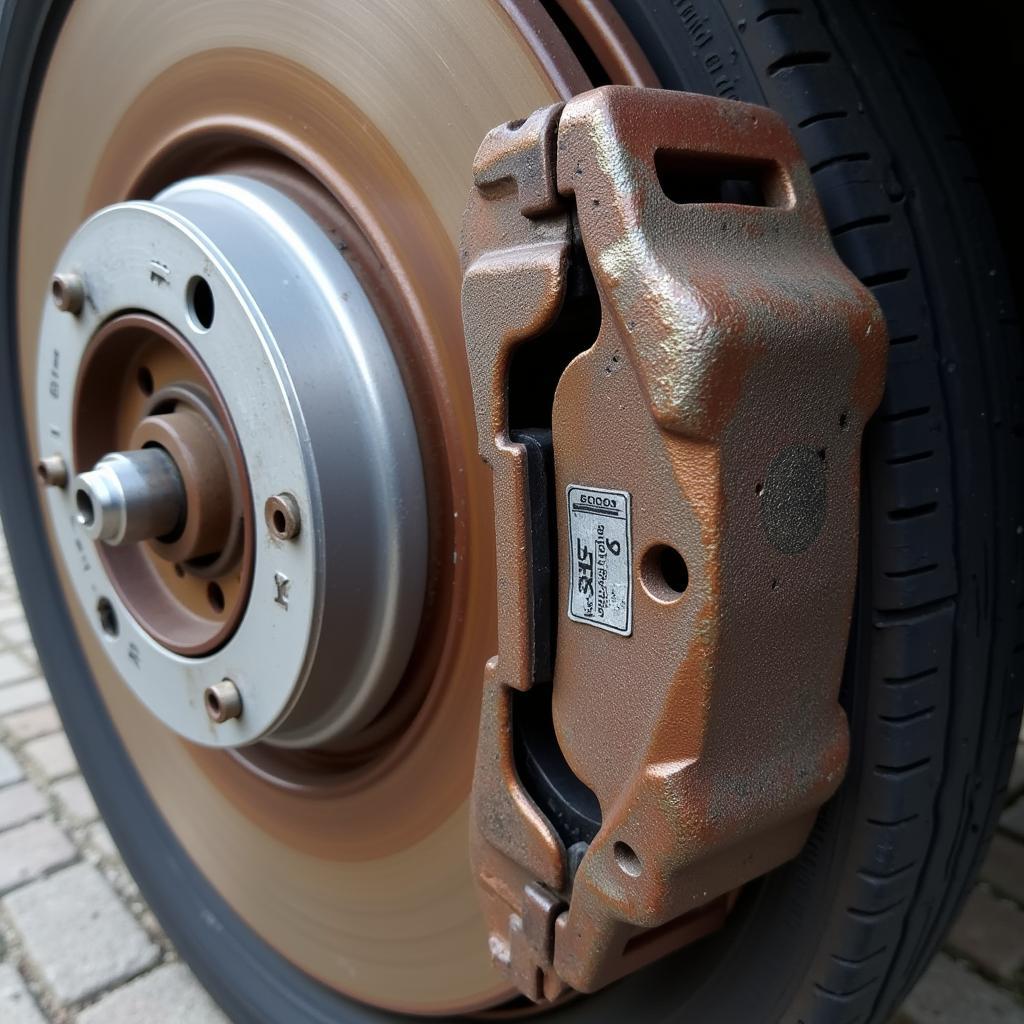That pesky battery indicator light on your dashboard. You glance at it, hoping it’s just a fluke, but it stays stubbornly lit. A sinking feeling sets in. What does it mean? Is your car about to die? Don’t panic! This comprehensive guide will walk you through everything you need to know about that glowing battery light, from the simplest fixes to more complex issues that may require professional help.
Understanding the Battery Light
The battery light doesn’t directly indicate a faulty battery. It actually signals a problem with the charging system. This system, comprised of the alternator, voltage regulator, and wiring, is responsible for keeping your battery charged and powering your vehicle’s electrical components. When the light comes on, it means the system isn’t functioning properly, and your battery is not receiving the charge it needs.
Common Causes of a Lit Battery Light
Several issues can trigger the battery indicator light. Let’s explore some of the most frequent culprits:
-
Loose or Corroded Battery Cables: Over time, battery terminals can corrode or become loose, disrupting the electrical connection. This is often the easiest problem to fix and a good place to start troubleshooting.
-
Failing Alternator: The alternator is the heart of your car’s charging system. If it’s not generating enough electricity, the battery light will illuminate.
-
Faulty Voltage Regulator: The voltage regulator controls the output of the alternator. A malfunctioning regulator can overcharge or undercharge the battery, both of which can trigger the warning light.
-
Worn-Out Serpentine Belt: The serpentine belt drives the alternator. A worn or broken belt will prevent the alternator from spinning, effectively cutting off the charging system.
-
Bad Wiring: Damaged or corroded wiring within the charging system can interfere with the flow of electricity, causing the battery light to come on.
Troubleshooting the Battery Light
Here’s a step-by-step guide to help you diagnose the problem:
-
Check the Battery Terminals: Inspect the battery terminals for corrosion or looseness. If you see any corrosion, clean it with a baking soda and water solution and a wire brush. Tighten any loose connections.
-
Inspect the Serpentine Belt: Look for cracks, fraying, or looseness in the serpentine belt. If it’s damaged, replace it.
-
Test the Battery: Have your battery tested at an auto parts store. A weak or failing battery can sometimes cause the light to come on, even if the charging system is working correctly.
-
Test the Alternator: You can have the alternator tested at an auto parts store or use a multimeter to check its output.
-
Check the Wiring: Carefully inspect the wiring connected to the alternator and battery for any signs of damage or corrosion.
 Checking Car Battery Terminals for Corrosion
Checking Car Battery Terminals for Corrosion
When to Seek Professional Help
If you’ve gone through these steps and the battery light is still on, it’s time to consult a professional. They have the expertise and diagnostic tools to pinpoint the exact cause of the problem and perform the necessary repairs. Ignoring a persistent battery light can lead to more serious issues, such as a dead battery, electrical system damage, or even being stranded on the road.
“A simple battery light can sometimes point to a complex issue,” says automotive electrical specialist, David Miller. “Don’t underestimate the importance of a proper diagnosis to avoid costly repairs down the line.”
Remote Diagnostics and Software Solutions
In today’s technologically advanced world, remote diagnostics and software solutions are becoming increasingly prevalent in automotive repair. These tools allow technicians to remotely access your vehicle’s computer system, diagnose problems, and even perform software updates or programming fixes without physically being present. This can save time and money, especially for software-related issues affecting the charging system.
Conclusion
Seeing the battery indicator light on your dashboard can be alarming, but understanding its meaning and knowing how to troubleshoot it can empower you to take the right steps. While some issues are simple fixes, others require professional attention. By following the guidelines in this article and seeking professional help when needed, you can keep your car’s charging system in top condition and avoid being left in the dark. Remember, addressing the battery light promptly can prevent further damage and ensure your vehicle’s electrical system stays powered up for miles to come.
FAQ
- Can I drive with the battery light on? You can drive a short distance, but it’s not recommended. The battery is not being charged, and you risk being stranded.
- How much does it cost to fix a battery light issue? The cost varies depending on the cause. A simple fix like cleaning battery terminals is inexpensive, while replacing an alternator can be more costly.
- How long does an alternator last? Alternators typically last between 7 and 10 years, depending on driving conditions and vehicle maintenance.
- Can a bad battery cause the battery light to come on? Yes, a weak or dying battery can sometimes cause the light to illuminate.
- Is it safe to jump-start a car with a bad alternator? Yes, you can jump-start a car with a bad alternator to get it to a repair shop, but it won’t charge while driving.
- Can extreme temperatures affect the battery and charging system? Yes, both extreme heat and cold can affect battery performance and potentially cause charging system issues.
- How can I prevent battery light issues in the future? Regular vehicle maintenance, including battery and alternator checks, can help prevent charging system problems.
“Regular preventative maintenance is key to avoiding charging system issues and ensuring the longevity of your vehicle’s electrical components,” adds David Miller.

